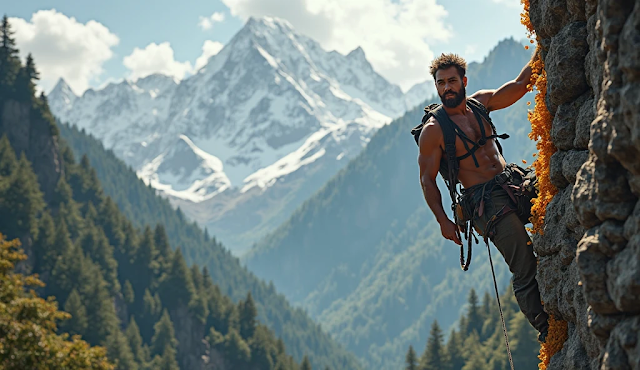Nestled in the serene hills of Gorkha District, Nepal, the Manakamana Temple stands as a beacon of faith, tradition, and divine grace. Dedicated to Goddess Bhagwati, an incarnation of Parvati, this sacred site attracts thousands of Hindu devotees annually, all seeking the blessings of the goddess who is believed to fulfill heartfelt wishes.
🏔️ 🕉️Location and Accessibility
Situated approximately 1,300 meters above sea level on the Kafakdada Hill, the temple offers panoramic views of the surrounding landscapes, including the majestic Annapurna II, Lamjung Himal, and Manaslu mountains. The confluence of the Trishuli and Marsyangdi rivers further enhances the temple's picturesque setting.
Getting There
-
By Road and Cable Car: The most popular route is via the Manakamana Cable Car, which operates from Kurintar to the temple. This 2.8 km aerial journey takes about 10 minutes and provides a unique perspective of the region's natural beauty.
-
By Trekking: For the adventurous, a hike from Anbu Khaireni offers a more spiritual approach, taking approximately three hours to reach the temple.
🛕 Historical Significance
The origins of the Manakamana Temple trace back to the 17th century, founded by Arman Rayamajhi in 1678. According to legend, the temple's establishment is intertwined with the divine manifestation of Queen Champawati, who is believed to have reincarnated as Goddess Manakamana. Her appearance led to the construction of the temple, where devotees could seek her blessings.
Over the centuries, the temple has undergone several renovations, especially after sustaining damage from the 1934 and 1988 earthquakes. The most recent restoration, completed in 2018, involved the application of 14 kilograms of gold to the roof, enhancing its grandeur.
🏯 Architectural Marvel
Designed in the traditional Nepalese pagoda style, the temple features:
-
Two-story structure: Reflecting classic architectural elements.
-
Ambulatory passage: Allowing devotees to circumambulate the shrine.
-
Golden roof: Added during the 2018 restoration, symbolizing divine radiance.
The temple complex spans approximately 3.8930 square kilometers, encompassing various shrines and sacred sites.
🙏 Religious Significance
The name "Manakamana" is derived from two Sanskrit words:
-
Mana: Heart
-
Kamana: Wish
Devotees believe that by visiting this temple and praying with a sincere heart, their wishes will be granted. The temple is especially revered during major Hindu festivals like Dashain and Durga Ashtami, drawing large crowds seeking blessings.
🚠 The Manakamana Cable Car: A Modern Marvel
Inaugurated on November 24, 1998, by Crown Prince Dipendra Bir Bikram Shah Dev, the Manakamana Cable Car revolutionized access to the temple. The gondola lift system, designed by the Austrian company Doppelmayr, connects Kurintar to the temple, covering a distance of 2,772.2 meters.
Key features include:
-
31 passenger cars: Each accommodating six passengers.
-
Capacity: Can handle up to 600 persons per hour.
-
Safety measures: Equipped with automatic generators and hydraulic emergency drives.
This cable car not only facilitates easy access but also offers a scenic journey, enhancing the pilgrimage experience.
🛍️ Pilgrimage Experience and Offerings
Upon reaching the temple, devotees can engage in various rituals:
-
Prayers and offerings: Presenting flowers, fruits, and incense to the goddess.
-
Animal sacrifices: Traditionally, goats and chickens are offered, though recent regulations have restricted such practices.
-
Purchasing religious items: Souvenirs like prayer beads, brass bells, and miniature idols are available for devotees to take home.
🗓️ Best Time to Visit
The ideal periods to visit the Manakamana Temple are:
-
Dashain Festival (September–October): The most significant Hindu festival in Nepal.
-
Durga Ashtami: Celebrated in September, honoring Goddess Durga.
-
Nag Panchami: Observed in July–August, dedicated to serpent worship.
During these times, the temple sees a surge in visitors, making it a vibrant and spiritually enriching experience.
🌐 Manakamana in Popular Culture
The temple's unique cable car journey has captured the imagination of many. The 2013 documentary film "Manakamana" showcases various individuals riding the cable car, offering insights into the diverse experiences of pilgrims.
💬 Testimonials from Devotees
"Visiting Manakamana was a life-changing experience. The serene environment and the divine presence of Goddess Bhagwati made my wishes come true." – Ravi Kumar, India
"The cable car ride was exhilarating, and the temple's spiritual ambiance is unmatched. I felt a deep connection with the goddess." – Anjali Sharma, Nepal
🧭 Travel Tips for Pilgrims
-
Dress modestly: Respect the sacredness of the temple by wearing appropriate attire.
-
Carry essentials: Bring water, snacks, and a hat, especially if trekking.
-
Respect local customs: Follow the guidelines set by temple authorities, particularly regarding offerings and rituals.
📸 Visual Journey

The majestic Manakamana Temple against the backdrop of the Himalayas.

The scenic cable car journey to the temple.
🛍️ Souvenirs and Religious Items
For those interested in taking a piece of the temple's spirituality home, various religious items are available:
-
Prayer beads: Used during meditation and prayers.
-
Brass bells: Symbolizing the call to the divine.
-
Miniature idols: Representations of Goddess Bhagwati.
-
Prayer flags: Emblazoned with sacred mantras.
These items serve as reminders of the divine blessings received during the pilgrimage.
🏨 Nearby Accommodations
While many choose to return the same day, several accommodations near the temple offer a serene stay:
-
Manakamana Resort: Offers comfortable rooms with views of the temple.
-
Kurintar Guest House: Budget-friendly options with







0 Comments